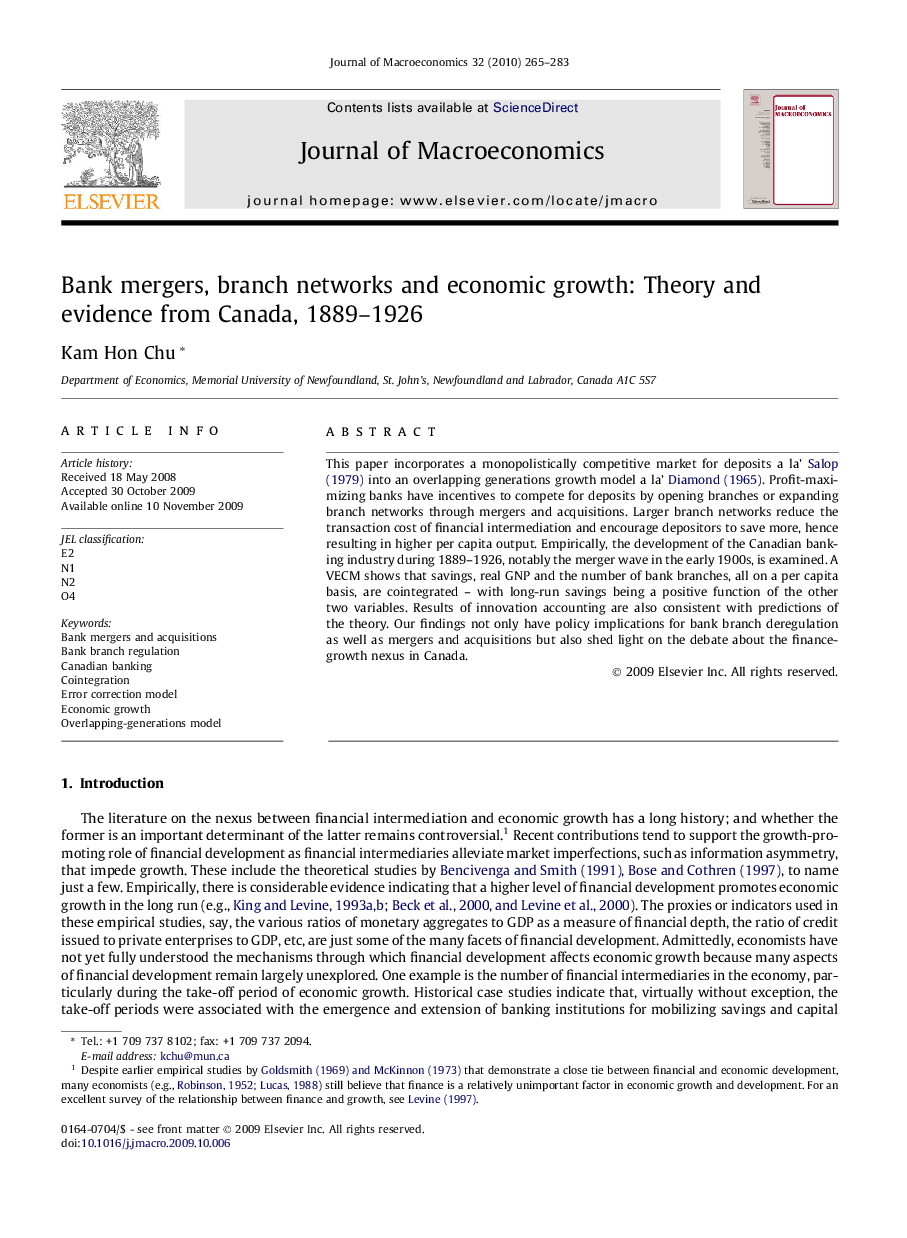| کد مقاله | کد نشریه | سال انتشار | مقاله انگلیسی | نسخه تمام متن |
|---|---|---|---|---|
| 966027 | 930918 | 2010 | 19 صفحه PDF | دانلود رایگان |
عنوان انگلیسی مقاله ISI
Bank mergers, branch networks and economic growth: Theory and evidence from Canada, 1889-1926
دانلود مقاله + سفارش ترجمه
دانلود مقاله ISI انگلیسی
رایگان برای ایرانیان
کلمات کلیدی
موضوعات مرتبط
علوم انسانی و اجتماعی
اقتصاد، اقتصادسنجی و امور مالی
اقتصاد و اقتصادسنجی
پیش نمایش صفحه اول مقاله

چکیده انگلیسی
This paper incorporates a monopolistically competitive market for deposits a la' Salop (1979) into an overlapping generations growth model a la' Diamond (1965). Profit-maximizing banks have incentives to compete for deposits by opening branches or expanding branch networks through mergers and acquisitions. Larger branch networks reduce the transaction cost of financial intermediation and encourage depositors to save more, hence resulting in higher per capita output. Empirically, the development of the Canadian banking industry during 1889-1926, notably the merger wave in the early 1900s, is examined. A VECM shows that savings, real GNP and the number of bank branches, all on a per capita basis, are cointegrated - with long-run savings being a positive function of the other two variables. Results of innovation accounting are also consistent with predictions of the theory. Our findings not only have policy implications for bank branch deregulation as well as mergers and acquisitions but also shed light on the debate about the finance-growth nexus in Canada.
ناشر
Database: Elsevier - ScienceDirect (ساینس دایرکت)
Journal: Journal of Macroeconomics - Volume 32, Issue 1, March 2010, Pages 265-283
Journal: Journal of Macroeconomics - Volume 32, Issue 1, March 2010, Pages 265-283
نویسندگان
Kam Hon Chu,